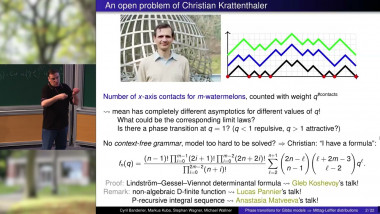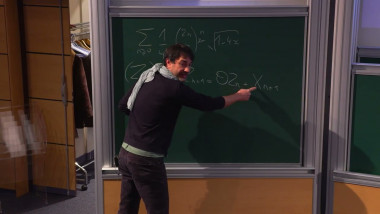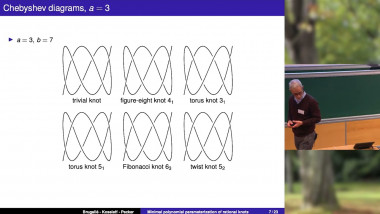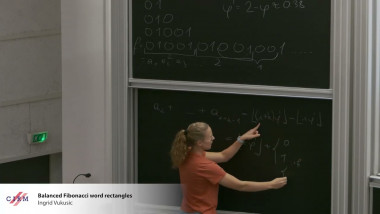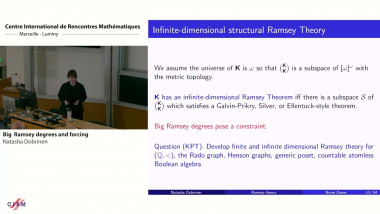Appears in collection : International workshop on graph decomposition / Rencontre internationale sur les méthodes de décomposition de graphes
A hole in a graph is an induced cycle of length at least four, and an odd hole is a hole of odd length. A famous conjecture of A. Gyárfás [1] from 1985 asserts:
Conjecture 1: For all integers $k,l$ there exists $n(k,l)$ such that every graph $G$ with no clique of carnality more than $k$ and no odd hole of length more than $l$ has chromatic number at most $n(k,l)$.
In other words, the conjecture states that the family of graphs with no long odd holes is $\chi$-bounded. Little progress was made on this problem until recently Scott and Seymour proved that Conjecture 1 is true for all pairs $(k,l)$ when $l=3$ (thus excluding all odd holes guarantees $\chi$-boundedness) [3].
No other cases have been settled, and here we focus on the case $k=2$. We resolve the first open case, when $k=2$ and $l=5$, proving that
Theorem 1. Every graph with no triangle and no odd hole of length $>5$ is $82200$-colorable.
Conjecture 1 has a number of other interesting special cases that still remain open; for instance
² Conjecture: For all $l$ every triangle-free graph $G$ with sufficiently large chromatic number has an odd hole of length more than $l$;
² Conjecture: For all $k,l$ every graph with no clique of size more than $k$ and sufficiently large chromatic number has a hole of length more than $l$.
We prove both these statements with the additional assumption that $G$ contains no $5$-hole. (The latter one was proved, but not published, by Scott earlier, improving on [2]). All the proofs follows a similar outline. We start with a leveling of a graph with high chromatic number, that is a classification of the vertices by their distance from a fixed root. Then the graph undergoes several rounds of "trimming" that allows us to focus on a subgraph $M$ with high chromatic number that is, in some sense, minimal. We also ensure that certain pairs of vertices with a neighbor in $M$ can be joined by a path whose interior is anticomplete to $M$. It is now enough to find two long paths between some such pair of vertices, both with interior in $M$ and of lengths of different parity, to obtain a long odd hole.
